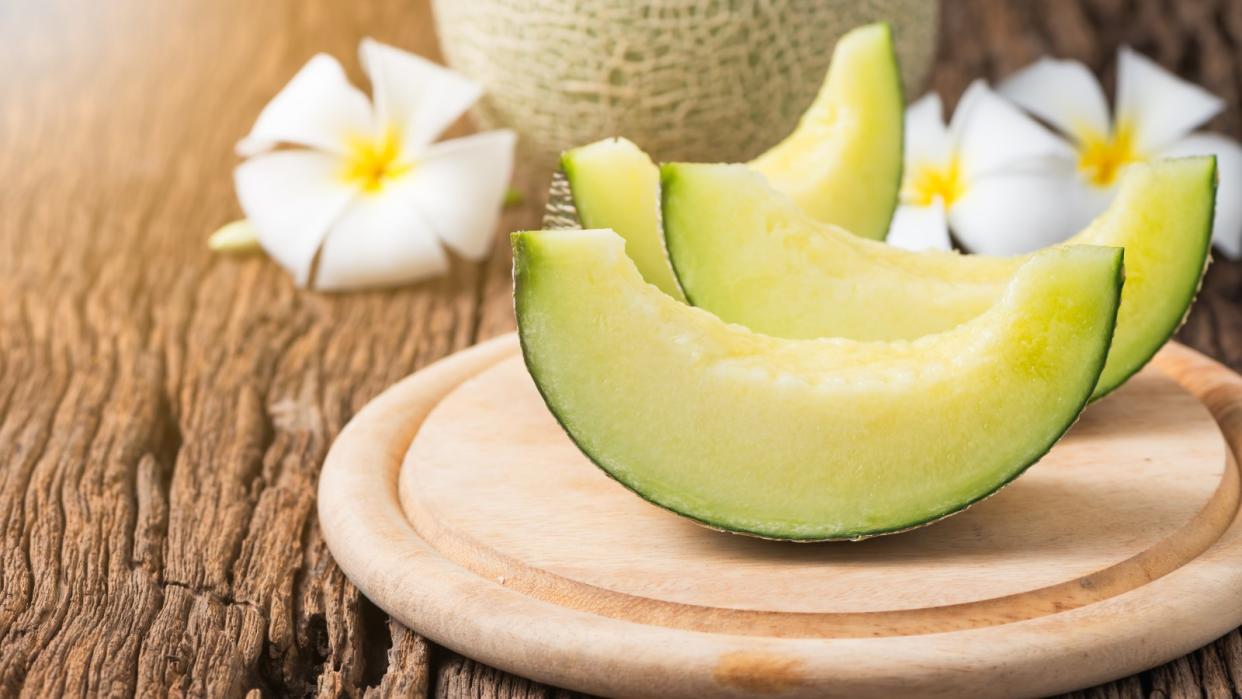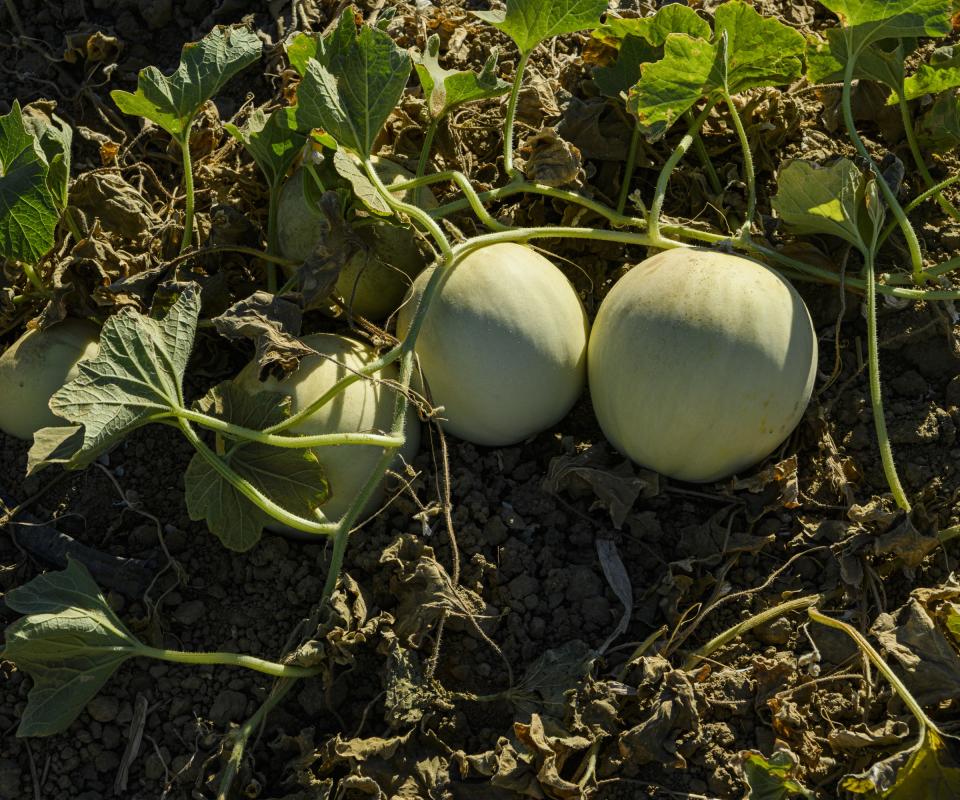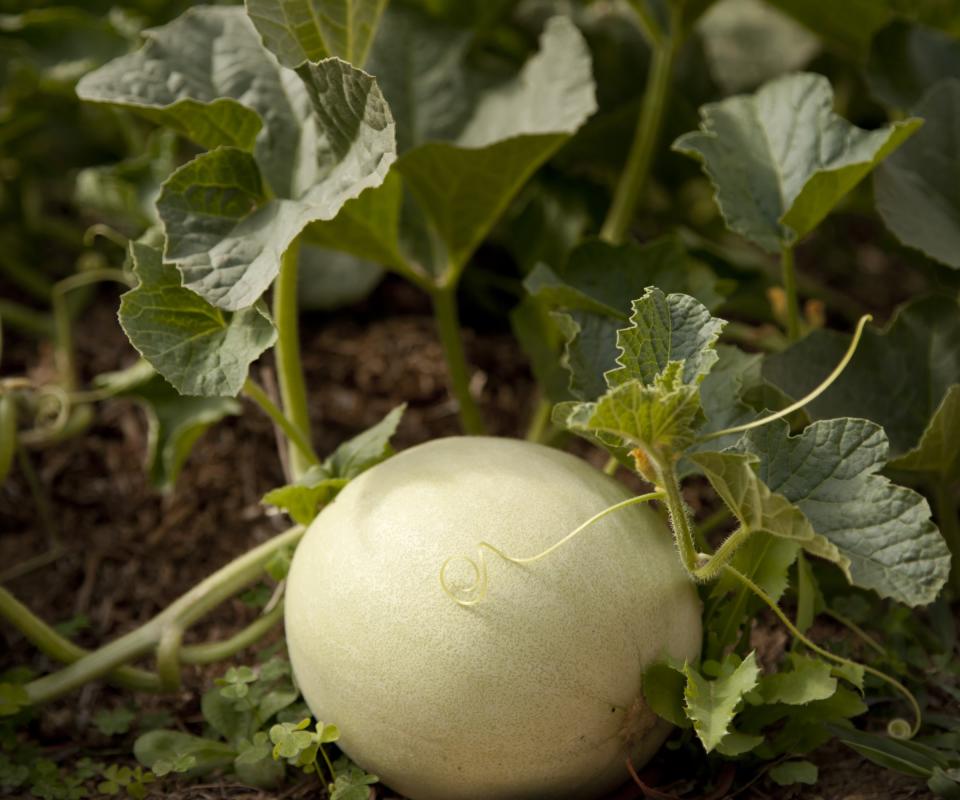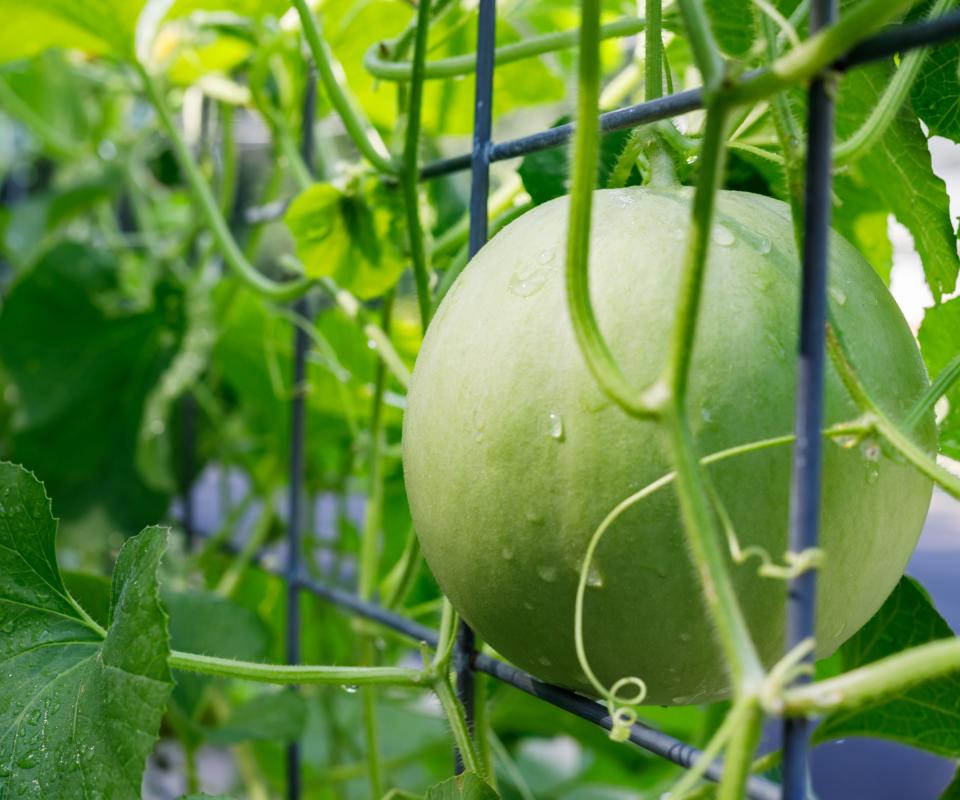How to grow honeydew melons from seed – for a great crop

Sweet and juicy honeydew melons are traditionally a crop grown in a greenhouse but can be cultivated outdoors successfully in warmer climates. Honeydew melons have pale green flesh and these popular fruits are rich in vitamins and minerals.
These prolific growers do have a long growing season that needs considering when you are planning your crops for the year. They also love warmth and need a lot of room to grow, though they can be grown vertically to take up less space.
The plants are often started from seed early in the season and do require some training. If you are growing honeydew melons indoors, they also benefit from being hand pollinated to make sure you have honeydew melons to pick at harvesting time.
How to grow honeydew from seeds

Honeydew seeds can be started indoors in February or March if you can provide heat of at least 60°F. If you want to start them outdoors then it is best to wait until the soil temperature hits at least 65°F.
Plants started indoors can be planted out into their final position once the risk of frosts has passed. Just like growing a watermelon, honeydew melons are commonly grown indoors as part of greenhouse ideas as they do want temperatures between 65–85°F, but they can grow outdoors in warmer US hardiness zones.
Seeds should be sown around half an inch deep in seed compost and the seedlings should emerge in 7-14 days. There is no need to fertilize seedlings at this early stage of their life, and the priority should be to give them a lot of light. This can be given in a backyard greenhouse, a sunny windowsill, or using artificial grow lights.
John Negus, gardening expert, hails the importance of strong light to ensure the plants develop in a healthy manner. He says the seedlings ‘must be positioned in good light in a temperature of around 61ºF', adding: ‘It’s vital to grow them on slowly to avoid them from becoming leggy and ‘spent’.
To sow honeydew melon seeds outdoors once the soil has warmed, sow them one inch deep in groups of up to six seeds that are three inches apart, with a view to keeping only half of the seedlings. Sow groups 4-6 feet apart and then thin the seedlings out when they are a couple of inches tall.
Honeydew melons are plants that need sun and space in order to thrive. The crop needs fertile and well-draining soil, ideally enriched with compost or well-rotted manure in the months before planting, and wants a sunny and warm spot in which to grow.

Bodacious Melon | Available at Burpee
A gourmet honeydew melon with sweet and succulent flesh. 'Bodacious' offers soft, sweet, and succulent flesh with fruits weighing 5-8 lb.View Deal
How to look after honeydew melons

Keep soil moist
Honeydew melons like the soil to be moist, so it is important to keep plants well-watered throughout their growing season. This is especially the case during periods of dry weather. Mulching around the plants with compost, well-rotted manure, or leaf mold can help to retain moisture in the soil and can especially be helpful to keep soil moist in the summer.
Avoid disease
By ensuring to water the soil and not the foliage it can avoid fungal diseases such as powdery mildew, leaf spot and anthracnose.
Fertilize
Feed plants with a balanced fertilizer at the time of planting and then, once the fruits are starting to form, feed every two weeks with a high potassium liquid fertilizer, such as one for growing tomatoes like this tomato fertilizer available at Amazon.
Pinch out
It is recommended to pinch out the growing tip of a honeydew when the plant’s main stem reaches four feet tall. This encourages side-shoots bearing female flowers, which will produce the fruit.
Help with pollination
Lucy Chamberlain, fruit and vegetable expert for Homes & Gardens, advises that, unless bees have access to blooms, you will need to hand-pollinate plants to guarantee having any honeydews to harvest. This might be important if you are growing the plants undercover, so remember to factor this task in when planning a greenhouse for the year.
Each honeydew vine will produce around three or four melons, but this can depend on whether only a select few were hand-pollinated, or nature was left to do its work.
She advises to ‘be gentle’ when pollinating the flowers and to aim to get at least two or three mature melons from each plant. Lucy has a few tips for hand-pollinating honeydew melons successfully:
First, identify the female flowers; these are generally produced on side-shoots, rather than on the main stem, and have a tiny swollen ‘melon’ behind them.
It’s also important to establish which are the male flowers. These are generally produced on the main stem, at the leaf joints. Unlike female blooms, they are borne on a slender stalk and have no visible baby melon behind them.
Pollinate mid-way through a warm, sunny day when blooms are dry. Identify fully open male and female flowers.
Remove the male flower’s petals and press its center gently into the middle of the female flower.
Harvest
The fruits can develop quickly and honeydew melons can be ready to harvest in three months. The signs to harvest honeydew melons are when the skin turns a creamy yellow and the blossom end of the fruit has a slight springiness. Remove the fruits using a pair of sharp and clean garden tools, such as pruning shears or harvesting knife.
Keep an eye out for pests on your plants
The likes of aphids, spider mites, and cucumber beetles are the main culprits. You can get rid of aphids and get rid of spider mites with a jet of water from a hose or by using insecticidal soap, while cucumber beetles can be knocked off the plants by hand. Companion planting can be used to attract natural predators into the garden that can deal with the likes of aphids.
How to grow honeydew melons on a trellis

Melons can be grown vertically on a trellis to take up a smaller amount of growing space. By utilizing vertical garden ideas you can grow more plants in a space and the advantages can be extremely useful as part of small backyard ideas. Growing them on a trellis lifts plants and fruits off the ground, away from pests, and also creates extra airflow around the plant.
A suitably strong trellis does need to be put in place, one sturdy enough to hold the weight of the vines and fruit, and it is best to have that structure in place before planting the melons. You can train honeydew melons up a wooden trellis, a wire frame or cage, or even a metal arched trellis.
Plant the melons about 24 inches apart and tie the vines to the trellis regularly as they grow. You will also need to give the fruits extra support too. By providing the melons with a sling, bag, or netting support while they are developing it will keep them attached to the vine and you won't find them fallen on the floor.
FAQs
Can I grow honeydew melons in containers?
Honeydew melons can be grown in pots or containers successfully. Any container needs to be at least 16 inches wide and 16 inches deep to give the plants plenty of space for their roots. The advantage of pots is it means anyone without any soil in their backyard, or who has poor soil, can grow melons by placing the pot in the sunniest corner of their patio, courtyard, or deck.
Any pot needs holes in the bottom for drainage and it should be filled with good quality well-draining compost. Never reuse garden soil in pots as it can harm plants and holds too much moisture, increasing the risk of root rot. Honeydew melons in containers will need more water and feed than plants grown in the ground, as they can quickly use all the resources available in the finite amount of soil in the pot.
Fresh homegrown honeydew melons from the kitchen garden in summer are going to be so superior to any you can get from the store. If you are not fortunate enough to have a greenhouse and your climate is not suited to honeydew melons, then you can consider the alternative of growing cantaloupe as they are a melon more suited to outdoor growing.

